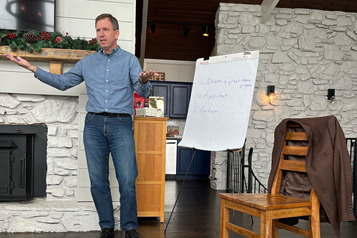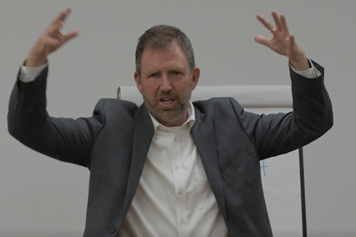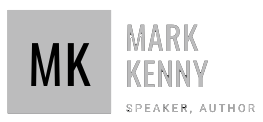If you have any hope of keeping your people, you must create a positive work environment. MIT Sloan recently found that during this “Great Resignation” attrition rates vary significantly between companies, even in the same industry. The number one reason for attrition is a toxic culture. Compensation was number sixteen.
For some leaders, you’ve allowed toxic behavior and you need to stop accepting it. For many leaders, you just haven’t set the clear expectations for how team members will interact with each other and your team needs the clarity those expectations bring. Ambiguity breeds anxiety. It’s time to give your team clarity.
I am going to share with you one simple tool to eliminate toxic behaviors and create a positive work environment on your team.
What is a Negative Work Environment?
In my career and life, I have discovered that the obvious isn’t always obvious, so let’s list some of the behaviors that describe a negative working environment:
- Talking to people with disrespect
- Personal attacks
- Not listening
- Assuming bad intent
- Not sharing information
- Talking over one another
- Passive aggressive behavior
- Excluding people
- Dominating meetings
- Unfair or unethical practices
- Not being present
- Acting out of self-protection instead of team cohesiveness
Notice that while some of these are more overt and some are more subtle, they are all negative behaviors.
Team Tenets
Positive behaviors don’t just happen. They require consistent intentionality. Our natural reactions and instincts are to take care of ourselves first. Team Tenets are simply a list of clear expectations for how we will interact with one another on the team. In my career, I have been amazed at how often this simple, highly effective tool, is not used. Usually it’s because leaders just haven’t thought to do it.
Where does this tool come from? I’ve used it in my own leadership, leaders such as Alan Mulally credit it with turning around their organizations, and I was recently reminded of its value by Kim Yap, Assistant Commissioner for HR for the State of Tennessee (Kim is the one who gave me the name “Tenets” – you can call them expectations or norms but I like tenets!)
Let’s walk through three steps to leverage Team Tenets for your team.
- Establish the Tenets
First, make a list of the specific behaviors by which your team will abide. I’m talking behaviors, not a concept like thoughtfulness. How are we going to interact with each other on the team? Behaviors are what someone else in the room can see, hear, and observe. You decide what the behaviors should be but I highly recommend that you include many of the following. These are basic, core behaviors that are requirements for a positive work environment for teams.
- Respect and appreciate each other.
- Always assume good intent.
- Include everyone in the conversation.
- Embrace disagreement – (Kim Yap says that professional disagreement is an essential business tool that we must embrace).
- Disagree about solutions, not people.
- Always tell the truth, always with kindness.
- Embrace a positive, “find-a-way” attitude.
- Have fun – enjoy the journey.
You may be wondering if you should create these tenets with your team or on your own. I find that a middle of the road approach works best: create an initial list and then bring it to the team for feedback. That gives the team a concrete list to which to react, instead of having to create a list from scratch. Once the list is established, ask the team to commit to the behaviors.
- Double Down on the Tenets
These tenets are non-negotiable. If you are the new leader of the team, preach these tenets from day one: this is how we will behave as a team. If you are an existing leader, tell the team that we can do better and we are going to change our behavior. You may need to apologize if you’ve let negative behavior go on.
How do you double-down?
First, remind everyone of the tenets to which you have all agreed…at every single team meeting and every single one-on-one interaction. Never stop reminding people. Every Thursday, Alan Mullally began his business process review meetings with his leaders by reminding them of the plan, which included how they were going to behave and work together as a team. He called it the Working Together plan, and it’s what he credits with turning around Ford Motor Company.
Second, point out “violations.” If you don’t, you will create a set of secondary, unwritten tenets. How do you point them out? You don’t have to figure it out. Ask the team. How do they want to hold each other accountable when one of them – including you – violate a Team Tenet? Let them decide. This could be something fun, like placing a dollar bill on the table or waving a handkerchief in the middle of the Zoom call. Most team members want to create a positive work environment.
However, at some point, you will need to have a direct conversation and provide open, honest feedback. This shouldn’t be an argument or a heated conversation, just smile, get the point, and say that we aren’t going to act that way on the team anymore and that the team member’s specific behavior needs to change. That’s it. There isn’t anything to explain. The rules have been adopted by the team.
- Be persistent.
Don’t give up. Some teams will adopt the tenets right away – they’ve been waiting for you to step up and establish these behaviors. For other teams, it will take longer. Don’t quit. Your team’s well-being – not to mention your own – needs this.
Will some people resist and self-select out of the team? Yes. Is that OK? Yes.
Watch your Team Take a Leap Forward
Your team needs you to take on the responsibility of building a positive work environment. While it may not be easy, it’s simple: set the expectations, always communicate the expectations, and don’t accept anything less. Then watch your team take a giant leap forward.
STRATEGIC TEAM OFF-SITES
Solve your teamwork challenges; build a high-trust environment; launch your team forward.
In-person, virtual, or hybrid.




